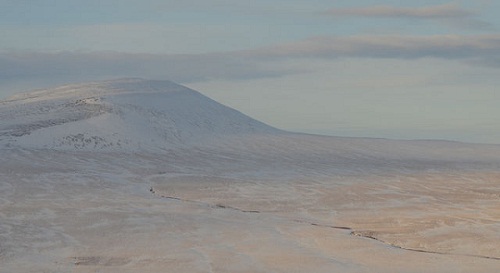NASA finds much higher methane emissions in Arctic winters

The amount of methane gas escaping from the ground during the long cold period in the Arctic each year and entering Earth’s atmosphere is likely much higher than estimated by current carbon cycle models, concludes a major new study led by San Diego State University and including scientists from NASA’s Jet Propulsion Laboratory, Pasadena, California.
The study included a team comprising ecologists Walter Oechel (SDSU and Open University, Milton Keynes, United Kingdom) and Donatella Zona (SDSU and the University of Sheffield, United Kingdom) and scientists from JPL; Harvard University, Cambridge, Massachusetts; the National Oceanic and Atmospheric Administration, Boulder, Colorado; and the University of Montana, Missoula. The team found that far more methane is escaping from Arctic tundra during the cold months when the soil surface is frozen (generally from September through May), and from upland tundra, than prevailing assumptions and carbon cycle models previously assumed. In fact, they found that at least half of the annual methane emissions occur in the cold months, and that drier, upland tundra can be a larger emitter of methane than wet tundra. The findings challenge critical assumptions in current global climate models. The results are published this week in the Proceedings of the National Academy of Sciences.
Methane is a potent greenhouse gas that contributes to atmospheric warming, and is approximately 25 times more potent per molecule than carbon dioxide over a 100-year period. Methane trapped in the Arctic tundra comes primarily from microbial decomposition of organic matter in soil that thaws seasonally. This methane naturally seeps out of the soil over the course of the year, but scientists worry that climate change could lead to the release of even larger emissions from organic matter that is currently stabilized in a deep, frozen soil layer called permafrost.
Over the past several decades, scientists have used specialized instruments to accurately measure methane emissions in the Arctic and incorporated those results into global climate models. However, almost all of these measurements have been obtained during the Arctic’s short summer. The region’s long, brutal cold period, which accounts for between 70 and 80 percent of the year, has been largely “overlooked and ignored,” according to Oechel. Most researchers, he said, figured that because the ground is frozen solid during the cold months, methane emissions practically shut down for the winter.
“Virtually all the climate models assume there’s no or very little emission of methane when the ground is frozen,” Oechel said. “That assumption is incorrect.”
Half of Alaska’s methane emissions occur in winter — mostly during times when soil temperatures are poised near freezing. Credit: NASA/JPL-Caltech.
Source: Environmental News Network

